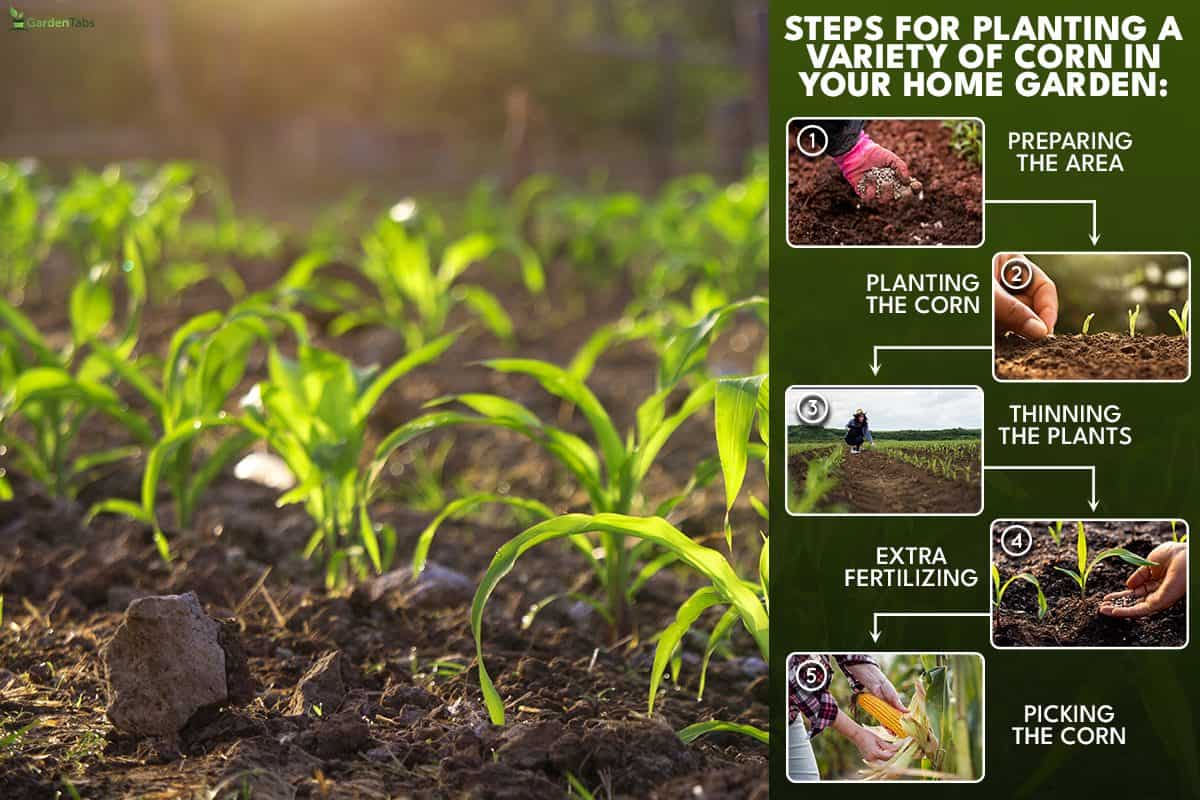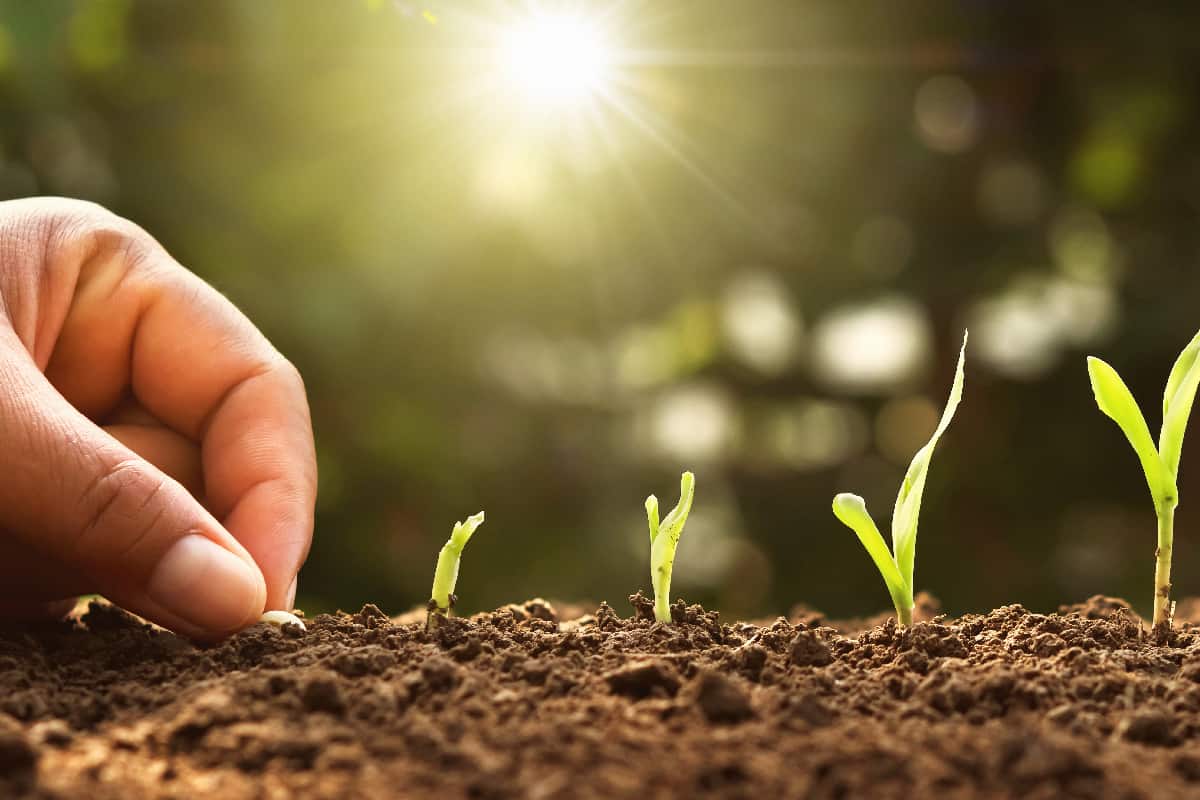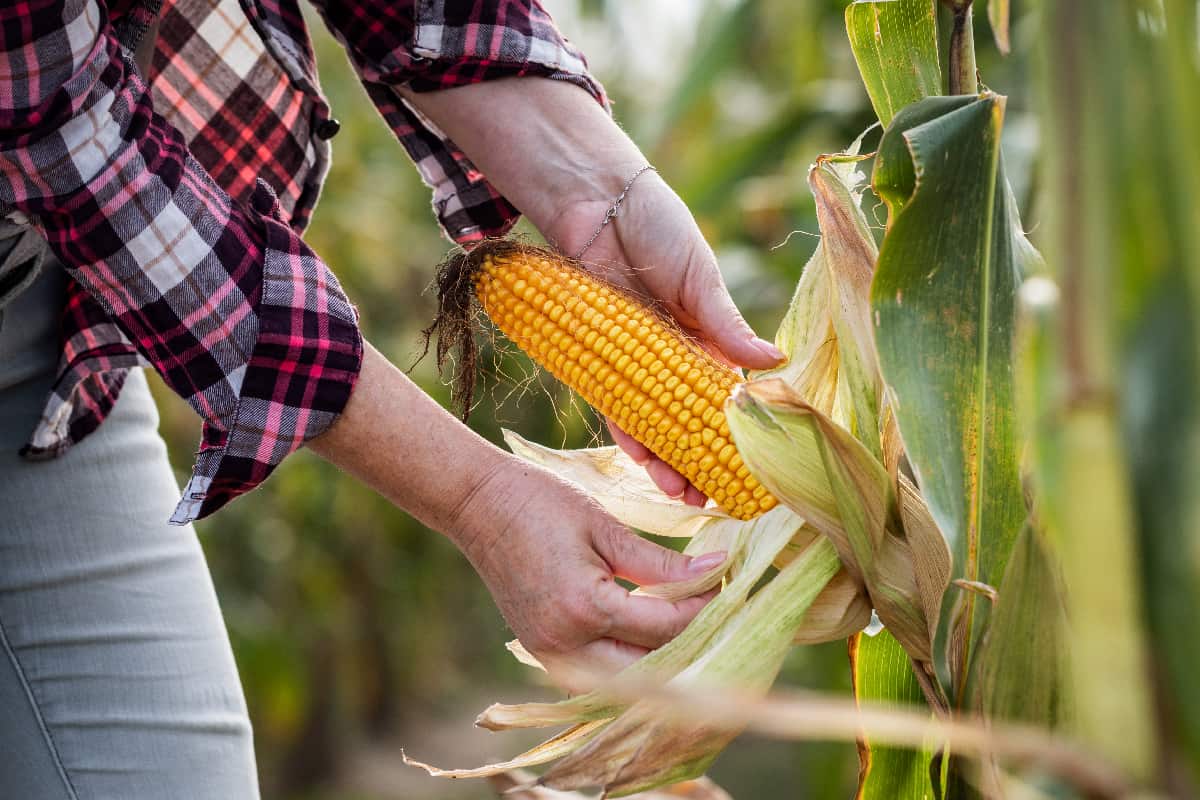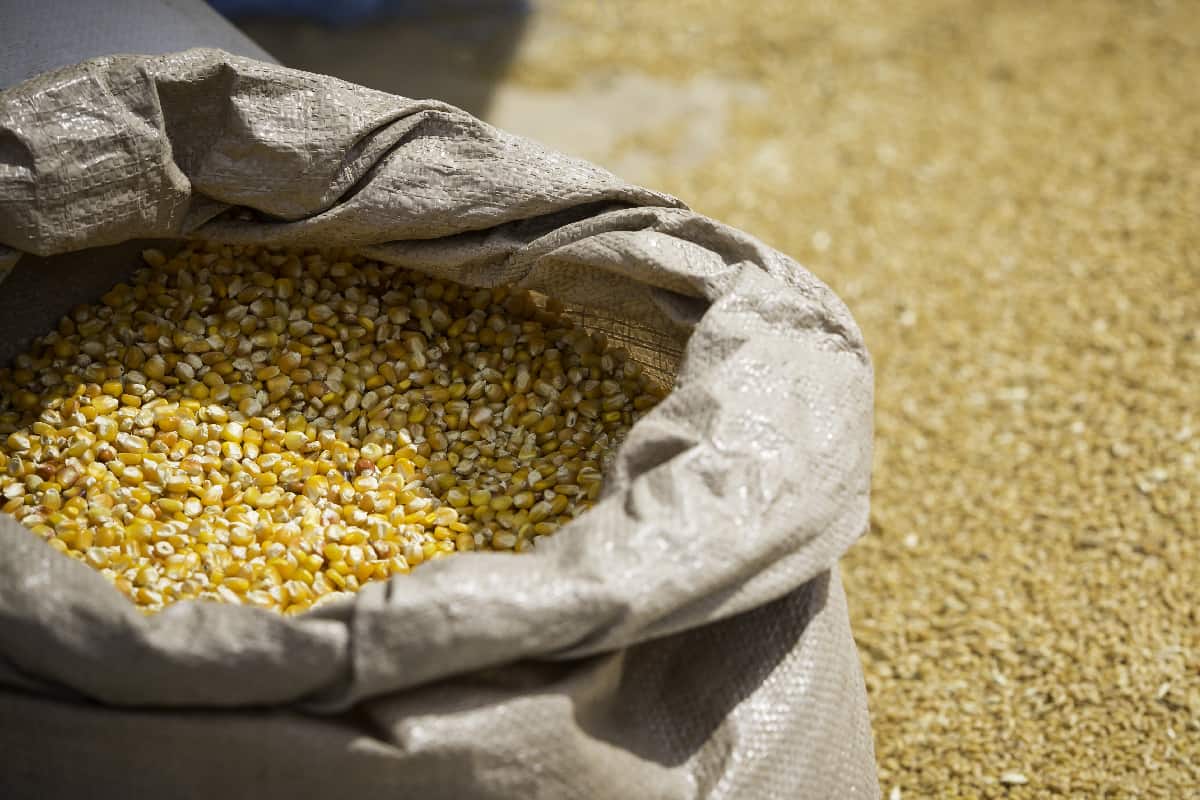Sweet corn is a sweet and healthy treat that is greatly enjoyed by many. If you enjoy this food, then you may be wondering if it's possible to grow your own corn. We've done the research and can tell you all about how to grow this vegetable yourself!
Corn (Zea mays) should be planted in areas with full sun in well-drained, moist soil. You should sow seeds between one and two inches deep and up to 12 inches apart. Instead of planting in long rows, you should plant corn in small blocks of at least 12 plants.
These plants have shallow roots and are easily stressed in dry conditions. So, be sure to keep them well watered. You should also be careful not to damage the roots when weeding.
Depending on the type you plant, you can be picking your own corn in around three months. Keep reading to learn more about how to grow them, their soil conditions, and more!
How To Plant Corn

Sweet corn is a group of corn that is the most popular for consumption and is one of the six types of maize. Each variety of corn will have slightly different growth and maturity rates.
So, you should check your species for specific information. However, this general guide will help you plant a variety of corn in your home garden.
Preparing The Area
Corn is a warm-season plant that is sensitive to drought, soil disturbance, and cold soil. So, you shouldn't begin planting until at least two weeks after the last frost or until the soil is at least 60 degrees Fahrenheit. It's best to start your corn directly in the ground, as they don't transplant very well.
Since corn is sensitive to its soil, you'll need to prepare the area before planting. It's recommended to amend the soil to a depth of eight inches. Before doing so, you should test the soil. Corn prefers fertile, well-drained soil with a pH between 6.0 and 7.0.
After testing, you can add the necessary amendments. You should use lime to adjust the soil's pH levels. In addition, use organic matter and fertilizer to boost nutrients and water retention.
Check out this lime additive on Amazon.
Planting The Corn

You should avoid planting your corn in long rows. These plants use the wind to pollinate their flowers. So, it's best to plant in short, box-shaped rows with a minimum of 12 plants.
Take your corn seeds and place them in a hole that is between one and two inches deep. You can put between one and three seeds per hole to increase the odds of germination. Then, lightly cover the seeds with soil.
Corn needs a lot of space to grow. Small varieties of corn typically need between 12 and 18 inches between them, while large varieties usually need between 18 and 24 inches. You should space your rows at least 30 inches apart.
When planting, it's important to only use one species per group. Sweet corn can be sensitive to cross-pollination. You should also stagger planting to extend your harvest. Depending on the length of your growing season, you can plant corn until June.
Finally, be sure that your maize is in a location that gets between six and eight hours of sunlight. You should also avoid planting other sun-loving plants too close to the corn; it may keep too much sunlight from reaching the other plant.
Do you have fresh kernels and not seeds? Check out this post to learn more: Can You Grow Corn From Fresh Kernels?
Thinning The Plants
As long as your soil has an average temperature of 60 degrees Fahrenheit, it will take around 12 days for the corn seedling to emerge.
If necessary, you should thin your plants. It's best until they reach four inches in height. You can also thin plants once their first true leaves appear. This will help you pick the best plants to save.
It's important to use scissors when removing any unwanted plants. Remember that corn has shallow and sensitive roots. So, it's best not to disturb the soil more than necessary.
Extra Fertilizing
For the best yields, you may need to side-dress your corn plants. Once maize reaches its rapid growth phase, it will require high amounts of nitrogen. Side-dressing them early can help prevent failure due to a lack of nitrogen.
The best time to apply more fertilizer is once the corn reaches between 14 and 20 inches tall or once it's in the V6 growth stage. Corn in this stage will have six leaves with a visible collar.
Extra fertilization should not be applied once the maize is in or past the V12 stage. During this phase, the plant will be preparing to go into the pollination phase. Side-dressing in these stages can result in yield loss.
Picking The Corn

Sweet corn is ready to be picked when the kernels produce a milky fluid. This is typically 20 days after you first notice silk on the corn ears and between 60 and 80 days after the first emergence.
You can test the corn kernels once you notice the pollen-carrying stalks—called tassels—have all turned brown. At this point, you can gently open a corn ear and pierce a kernel. If a clear substance comes out, you can gently close the husk and wait for it to fully mature.
If you're ready to harvest, then hold the stalk with one hand and the corn ear with the other. Twist the corn and pull it down hard. If you do not twist the corn, you could kill the plant. So, be careful not to skip this step.
How To Open Corn Husks

You should only pick the corn that you're prepared to use. Sweet corn quickly loses its quality. Ideally, you should use the picked corn within 24 hours of harvesting. However, you can store unopened corn husks wrapped in damp paper towels for up to 48 hours.
Remove corn from its husk by peeling the leaves back one by one until the kernels' silky hairs are exposed. You can take the hairs off by hand or by scrubbing with a toothbrush.
At this point, your corn is ready for preparation! You can boil and freeze them on the cob for up to eight months. Additionally, you can pressure can corn for up to five years.
If you want to use the corn immediately, you can eat it right off the cob or after cutting the kernels off. Some popular ways to prepare corn include boiling, grilling, and microwaving.
Is Corn Easy To Grow?
Despite a few challenges, growing corn at home is fairly easy. One of the biggest problems is space. Planting your crops too closely inhibits their growth and will cause them to fight for nutrients.
As we discussed earlier, corn also can't be planted too close to other sun-loving plants. So, you'll have to find appropriate companion plants.
Concerned that corn isn't compatible with your garden? Check out this post: How Far Apart To Plant Incompatible Plants?
Should You Soak Corn Seeds Before Planting?

Overall, soaking your seeds is a matter of preference. Smaller seeds usually won't benefit from it, and it can cause you to lose a lot of seeds. However, larger seeds can sometimes benefit from some soaking beforehand. Soaking seeds helps boost the moisture content of the seed and can soften the hard exterior.
If you have trouble with your corn seeds germinating, then you can try to soak them for 24 hours before planting. To soak seeds, you'll need either a small dish and water or a damp paper towel. Cover the seeds in water or with a paper towel and let them sit for between three and 24 hours.
If you put your seeds in a small dish, then you should gently pat them dry. Then, you should immediately plant your seeds. You should avoid letting them dry out anymore.
In Closing
Sweet corn is a delicious vegetable that can be grown at home with a bit of space and practice. Remember to give these plants plenty of room to grow, and plant them in box-shaped rows. It may also be necessary to side-dress your corn with additional nitrogen once it's further in the growing process.

